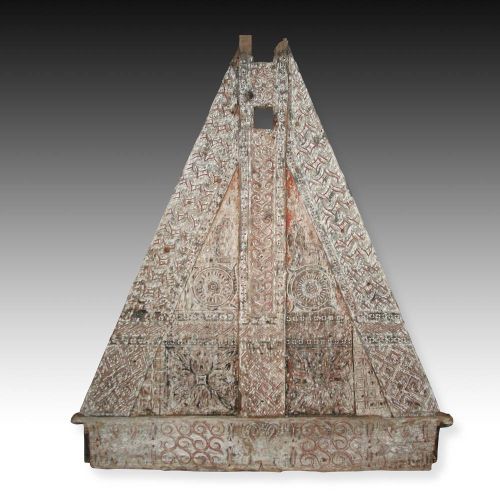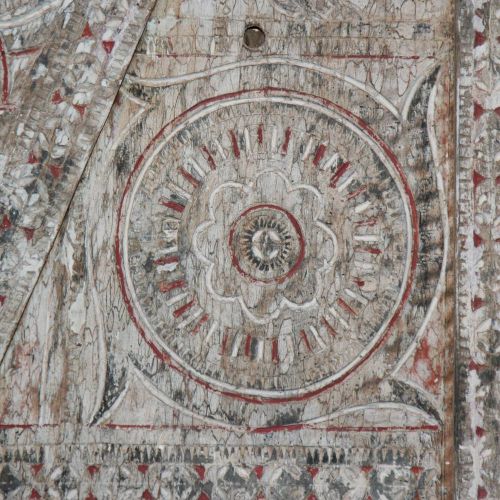Toraja Architectural Gable
Defining art•i•tec•ture
 |
|
| Toraja Architectural Gable; Tallunglipu Village, South Sulawesi, Indonesia; 19th C.; Carved and Painted Uru Wood; 70.75 L x 3 D x 84 H Inches; I.D. #A0901-192; Price on Request |
In the year 1800, a family group from the Toraja people gathered in their ancestral house on an island just east of Borneo called the Celebes. Present were multiple relatives - grandparents, parents, aunts, uncles, cousins, and kids. They were meeting to discuss the marriage of one of their daughters to a boy from a neighboring village. The conversation centered on the contents of the bride’s dowry, the bride price being given in return, and what type of official would conduct the ceremony. Would it be a shaman or a priest? The bride’s family believed in local gods; the groom’s family had converted to Christianity a few years before. During the course of the gathering all their questions were answered; and over the next two centuries, completely forgotten. The only evidence they ever met is this week’s New Arrival.
 |
|
|
Detail of Toraja Gable illustrates the Sun Motif, part of the Toraja carving language; I.D. # A0901-192; to learn more read the related blog |
This week’s New Arrival features an architectural gable from an ancestral house known as a Tongkonan. Created by the Toraja people who reside on the island now called Sulawesi in Indonesia, the Tongkonan sits on piles and has a large peaked roof. The gable is the triangular section found just under the top of the roof at the front and back of the structure. For centuries the Tongkonan was the focus of social and spiritual life among the Toraja. A place of worship and a gathering point where important decisions were made, most flat surfaces were covered with distinctive relief carving designed to conserve and convey traditional concepts and beliefs. This piece expresses more than the inventive language of architecture. It also defines art•i•tec•ture while providing an authentic one-of-a-kind artistic record of an endangered way of life.